Shorty Lahaie found his best friend dead from exposure in the mid 1950s, the men were the last two residents of Quesnel Forks. The body lay across a section of the 17km trail they both walked to get to work at Bullion Pit Mine. For Shorty, that winter must have felt a lot colder.
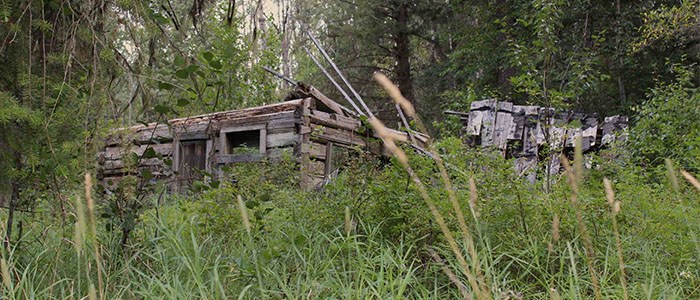 One of Nearly 20 Cabins,
One of Nearly 20 Cabins,
But stories like this aren’t uncommon for Chinese-Canadian Miners, who held onto fading towns and tried to pan for gold. For those who were marginalized, a town in decline was a lot safer and came with more opportunities. British Columbia has never been forgiving to its people, and it’s important to remind ourselves that Gold Rushes weren’t just Europeans trying and failing but instead an entire world shoved into one mining camp, any people of colour to make a lesser wage or nothing at all.
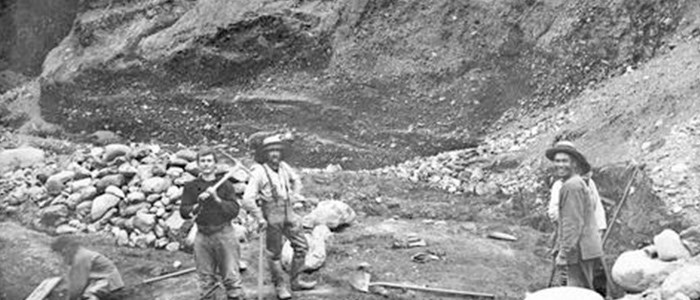 Miners at Bullion Pit Mine, 1890s, Courtesy of BC Archives
Miners at Bullion Pit Mine, 1890s, Courtesy of BC Archives
Quesnel Forks was founded in 1860, but as with any new place there were no guarantees. OnlyÌýtwo years into the town’s history theIt completely bypassed the forks to move further north to gold near Barkerville—European residents moved on in huge numbers.
Originally, Quesnel Forks thought they could become the capital but with half its population gone the dream was over. 1862 was the start of Quesnel Forks’ century of decline. Today, hastily built log cabins still stand around the site, their supports set deeply into the fine silt and mud of the shore, surrounded by the dull greens and greys of the Cariboo.
The town never grew, but remained noteworthy: business, superior river access, and most importantly as a place of solace for migrant Hawaiians, Jewish people, aboriginal people, emancipated slaves, andÌýChinese miners. The history of Gold Rushes scrape together images of white men in cotton shirts, mud, water, and cowboy hats. It’s rare that marginalized people'sÌýstories are widely shared or preserved, and that’s what makes Quesnel Forks incredibly unique.
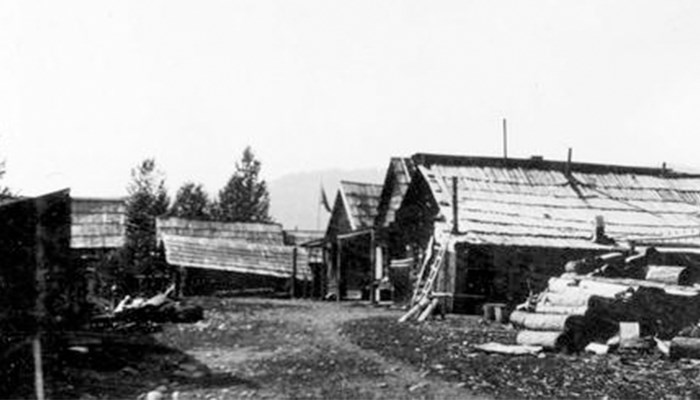 Chinese Miner’s Cabins, 1890s, Photo Courtesy of BC Archives.
Chinese Miner’s Cabins, 1890s, Photo Courtesy of BC Archives.
Those stories are clear in the epitaphs of the the segregated Cemetery. Names carved into wood with causes of death like smallpox, landslides, or occasionally old age. We stumbled across Jewish merchants who were murdered, and walked carefully on earth cratered by exhumed bodies once repatriated to China.
The cabins left show the new logs between the old, holding on. The Tong House’s good fortune signs still pressed into its beams, it’s hard to know if the luck ever came.
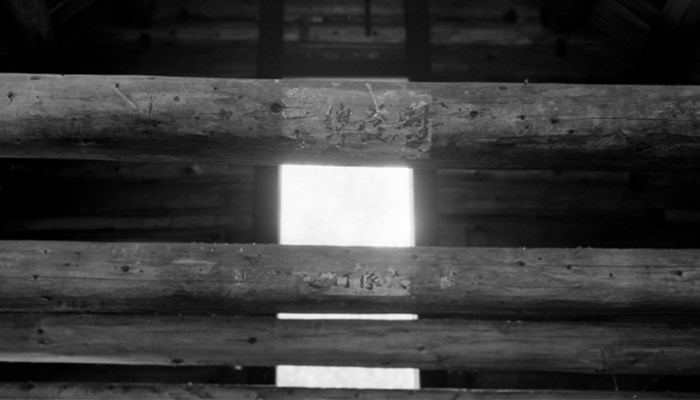 Disappearing Words, on the same trip by Kevin Harding, 2016. Other photos of the town can be found here.
Disappearing Words, on the same trip by Kevin Harding, 2016. Other photos of the town can be found here.
By 1870, new hope was growing as the Bullion Pit Mine opened. It was the largest hydraulic placer mine in the world, and owed a lot of its progress to the techniques of the Chinese Miners. The pit is now a rest area filled with rusted mining equipment and carved up picnic tables. The pit itself is three kilometres wide and 400 feet deep. We didn’t stay long, but the miner’s efforts were clear, the hugeness of it, unrelatable.
Since the 1990s, the nearby town of Likely has been doing a brilliant job keeping the buildings from being crushed in the winter, or slowly reclaimed by the river’s edge. They’ve built a small visitor’s centre as far from the water as possible; over half of Quesnel Forks has slipped away in spring floods.
The site is only accessible in the summer after the snow melt. Fittingly, you’ll need to pass through the town of Likely to get there: it’s the the last gas station, but aside from that spend a couple bucks and give back to the small town that keeps another one from disappearing.
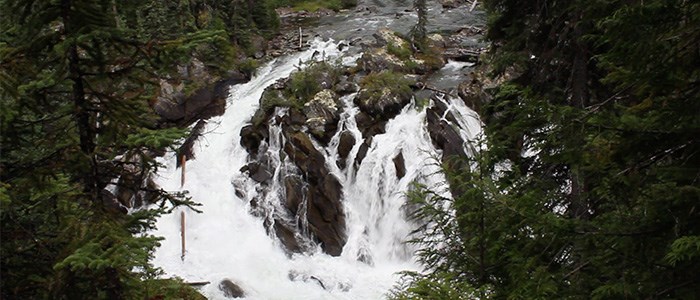 Ghost Falls, Barkerville Backroad,
Ghost Falls, Barkerville Backroad,
The access point to the Barkerville backroad is also in the area and there are a few more ghost towns around. It’s all part of the original Cariboo Wagon Road and the drive was by no means short; however, every corner was filled with purple wild flowers, sudden valleys, and shocking waterfalls. Everywhere you’d expect a safety rail there wasn’t one and the smallness we felt must have been sorry compared to those who spent weeks packing everything into their new hometowns. All reminded us that if gold was why people settled, it wasn’t necessarily why they stayed.
Below is a short video I made about Quesnel Forks and Ghost Towns in general, thought it might share some more of the sites that couldn't make it into the post!
[embed]https://www.youtube.com/watch?v=EfCnT13npxQ[/embed]


